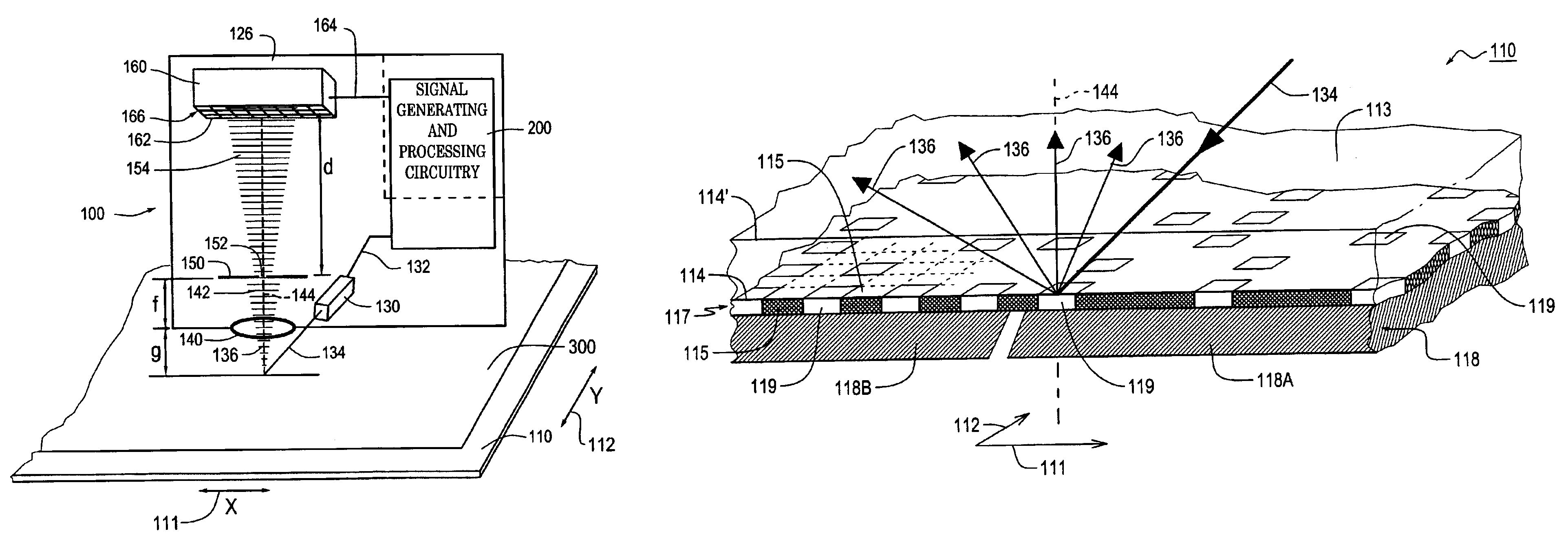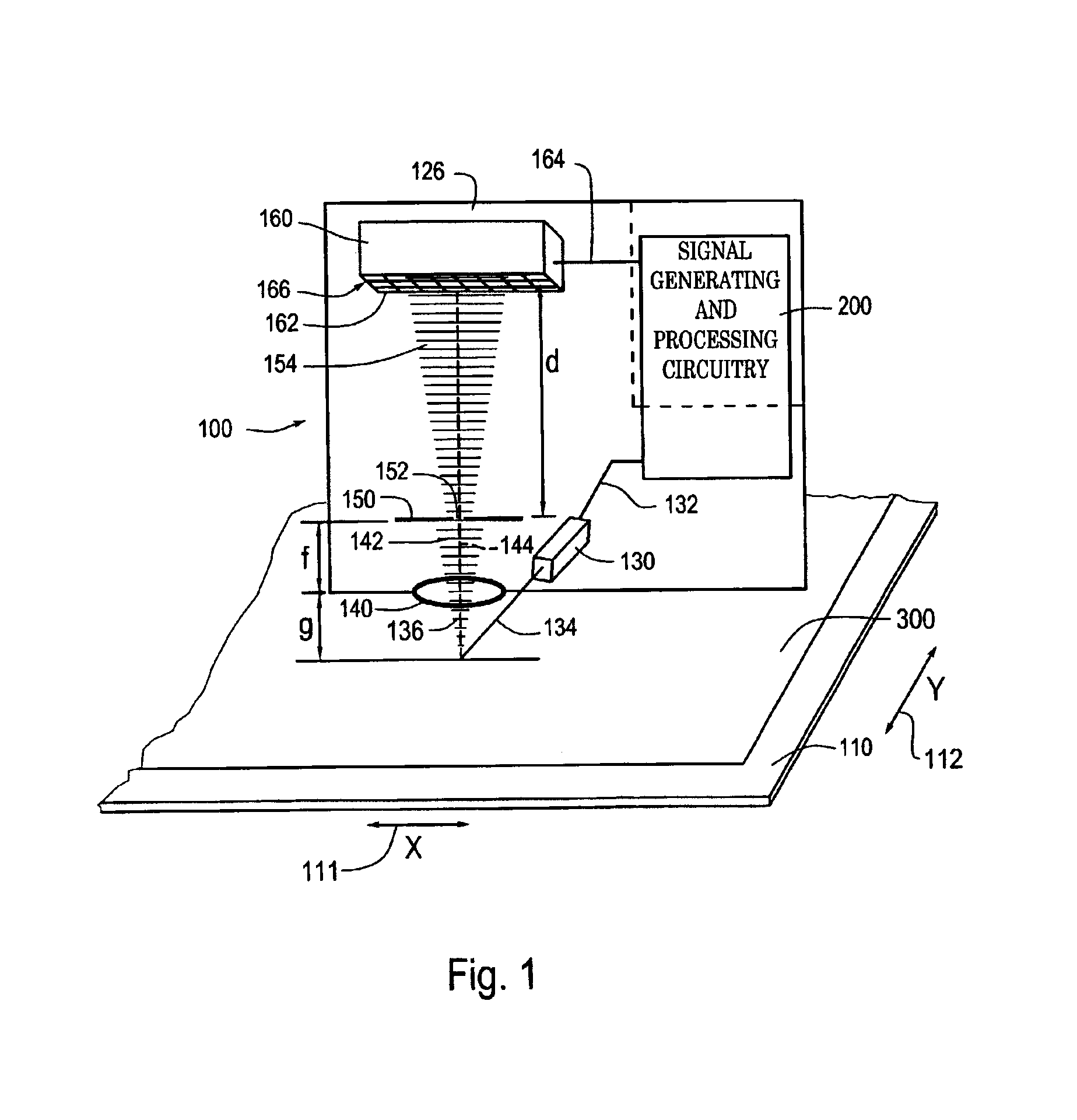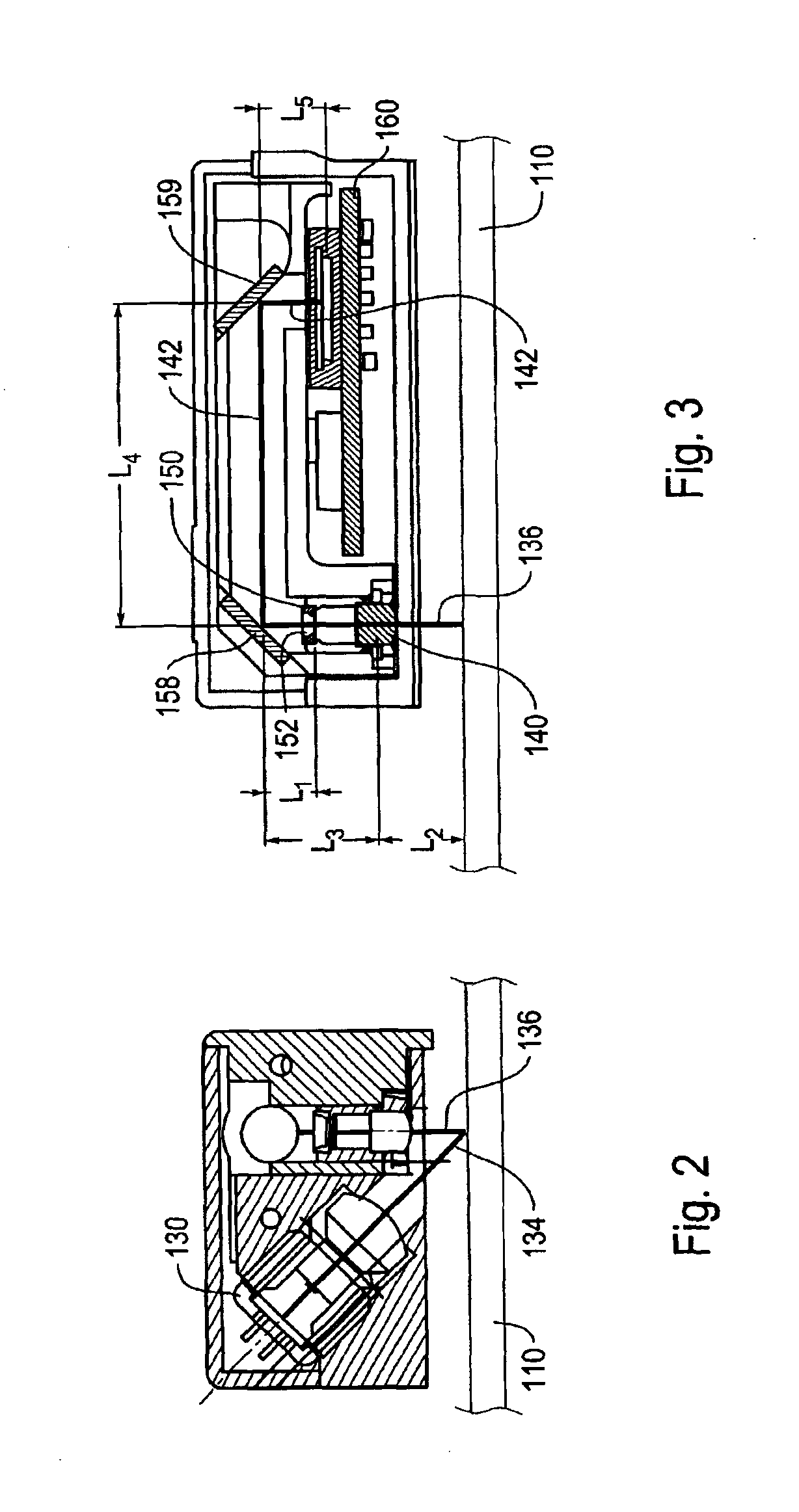Systems and methods for absolute positioning using repeated quasi-random pattern
a quasi-random pattern and absolute positioning technology, applied in the direction of electrical/magnetically converting the output of the sensor, instruments, material analysis, etc., can solve the problems of increasing the complexity of signal processing, affecting the accuracy of the signal processing, and the inability to adapt to the use of high-resolution 2d absolute measurement systems. , to achieve the effect of reducing the spatial resolution, reducing the complexity of the pattern, and high resolution
- Summary
- Abstract
- Description
- Claims
- Application Information
AI Technical Summary
Benefits of technology
Problems solved by technology
Method used
Image
Examples
Embodiment Construction
[0045]FIG. 1 is a block diagram of a 2D optical absolute position encoder 100 usable with a 2D integrated scale pattern according to this invention to generate a 2D absolute position measurement. The 2D optical absolute position encoder 100 shown in FIG. 1 includes a readhead 126, signal generating and processing circuitry 200 and a 2D scale 110. The 2D scale 110 includes a 2D integrated scale pattern 300. In FIG. 1, the components of the readhead 126, and their relation to the 2D scale 110 and the 2D integrated scale pattern 300, are shown schematically in a layout that generally corresponds to an exemplary physical configuration, as further described below.
[0046]In particular, the scale 110 is positioned adjacent to an illuminating and receiving end of the readhead 126, such that when the 2D scale 110 is illuminated by light emitted from that end of the readhead 126 by a light source 130, the emitted light is selectively reflected back by the 2D integrated scale pattern 300 on the...
PUM
 Login to View More
Login to View More Abstract
Description
Claims
Application Information
 Login to View More
Login to View More - R&D
- Intellectual Property
- Life Sciences
- Materials
- Tech Scout
- Unparalleled Data Quality
- Higher Quality Content
- 60% Fewer Hallucinations
Browse by: Latest US Patents, China's latest patents, Technical Efficacy Thesaurus, Application Domain, Technology Topic, Popular Technical Reports.
© 2025 PatSnap. All rights reserved.Legal|Privacy policy|Modern Slavery Act Transparency Statement|Sitemap|About US| Contact US: help@patsnap.com



